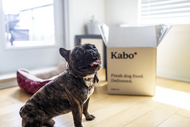Moving To A New Home This Year?
Posted by Cindy Aldridge on Jan 5th 2021
Image via Unsplash
Calming Your Furry Family Members: How To Move With Cats and Dogs
Moving is difficult enough for humans, so it isn’t any surprise that it is also difficult for the pets in your life. Planning a move involves a lot of different components, and if you have pets, they have to be a part of your plans. Thankfully, it doesn’t have to be a struggle to make your dog or cat comfortable during a move—and this advice from North Coast Pets can help.
Preparing for Your Move
Preparing your pets for a move should be done in advance, especially if you’re changing states. Cats and dogs are creatures of habit. Start to acclimate your pets to some of the nuances of moving early on. For instance, if you have cats, get them comfortable with their carrier. Leave the carrier out, open and in a room where your cat is likely to explore it. You can use toys or treats to encourage comfort around the carrier.
For both dogs and cats, their everyday routine is critical. Stick to the usual walking and feeding schedule, and do not change their routine during the moving preparation. Also, if some of your rules will change for the dogs, make sure to start training them in advance. For example, if you have closer neighbors in the new place, you may have to train your dog not to bark at strangers.
Also make sure you connect with a new veterinary clinic and transfer your records. And as with any trip, your pets should have identification, in case something were to happen.
Making Your Pets Comfortable on Moving Day
NPR reports that dogs can mirror stress levels . If you are stressed, then it’s likely that your pets are stressed, too. According to a survey, many Americans say that moving is one of the most stressful life events. They put moving above divorce and having children. In the days leading up to the move, consider leaving your pets with a pet sitter. Your pets won’t have to be exposed to as much stress.
On moving day, if you have a long trip, exercise your pets in advance. Not only is it a good break from the stress of the move, but it’ll help get out some of their nervous energy. Pack food and water but only feed them lightly, especially if they are easily car sick , and be sure to cover the seat. If you’ll be driving, make sure your pets are secure in the vehicle and have plenty of ventilation.
Adjusting to Your New Home
How you handle the adjustment period depends on where you’re moving. Regardless of whether you are moving into a new house, an apartment or staying with friends, your first order of business is to pet-proof the place. If you have dogs, check the fencing to ensure that there is no possible way for them to escape. For cats, you may want to tie up blind cords to prevent cats from injuring themselves.
If you are downsizing from your current place or moving to an apartment with a limited yard, give extra care to your pet’s mental stimulation. There are puzzle toys for dogs and cats that can help, but for the sake of familiarity, be sure to bring some of your furry friend’s oldies-but-goodies into the new space, too. And along those same lines, arrange your pet’s sleeping and eating areas similarly to how they were before.
Knowing how to keep your pets comfortable during the move is critical to keeping your cool on moving day. Pets may have difficulty with adjustments, but there are ways that you can help them acclimate quicker.
North Coast Pets is pleased to provide you with tips and information on keeping your pets happy and healthy, as well as all the pet supplies you need to settle your furry family members into your new home.


